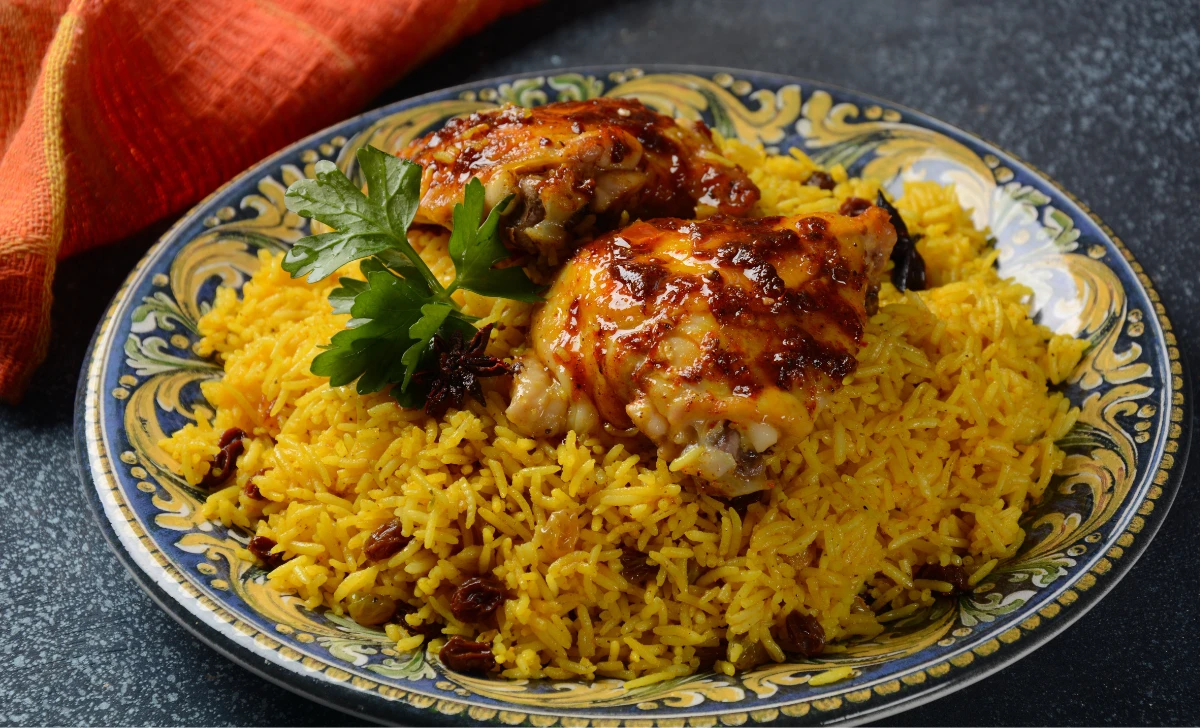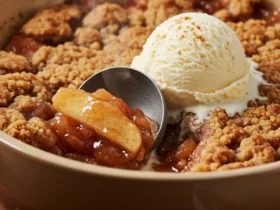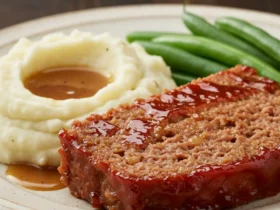If you’re a fan of aromatic spices, succulent chicken, and a dish that’s as satisfying to make as it is to eat, then you’re in for a treat. Welcome to the world of Chicken Kabsa, a traditional Middle Eastern dish that’s a symphony of flavors and textures. In this article, we’ll take you through the steps of creating your very own Chicken Kabsa masterpiece that will have your taste buds dancing with joy.
[ez-toc]
History
Food is a gateway to culture, and Chicken Kabsa is no exception. This iconic Middle Eastern dish has a history as rich and diverse as its flavors. Let’s take a journey back in time and explore the fascinating story behind Chicken Kabsa.
Origins in the Ancient Spice Routes
The roots of Chicken Kabsa can be traced back to the ancient spice routes that connected the Middle East with the rest of the world. As traders traversed these routes, they brought with them a treasure trove of exotic spices, which would eventually find their way into this delectable dish. The fragrant spices, such as cardamom, cloves, and cinnamon, that now define Chicken Kabsa, were highly prized commodities that not only added flavor but also preserved food during long journeys.
A Culinary Mosaic: Fusion of Flavors
Chicken Kabsa didn’t simply emerge overnight; it’s a result of centuries of culinary cross-pollination. The dish reflects the region’s history of trade, conquests, and cultural interactions. It’s believed that the dish took shape in the Arabian Peninsula, where Bedouin tribes utilized locally available ingredients to create a dish that could sustain them through the harsh desert environment.
The Arabian Epicenter
The heart of Chicken Kabsa’s evolution lies in the Arabian Peninsula. This is where the dish truly began to take its recognizable form. Over time, the Bedouin influence merged with other culinary traditions, particularly those from Persia and India, resulting in the unique combination of spices and techniques that define Chicken Kabsa today.
A Dish for Celebration and Togetherness
Chicken Kabsa is more than just sustenance; it’s a dish steeped in tradition and hospitality. In the Middle East, sharing a meal is a symbol of unity and friendship, and Chicken Kabsa often takes center stage during festive occasions, weddings, and family gatherings. The communal aspect of the dish, where everyone gathers around a single platter, is a testament to the values of togetherness and sharing ingrained in the culture.
Global Recognition and Interpretation
As the world became more interconnected, so did Chicken Kabsa. With the spread of Middle Eastern cuisine, this dish embarked on a journey across borders and oceans. Each region that embraced Chicken Kabsa added its own unique twist, incorporating local ingredients and culinary techniques. From the Arabian Peninsula to North Africa and beyond, the dish’s adaptability made it a cherished recipe in various cultures.
Chicken Kabsa in Modern Times
In the modern era, Chicken Kabsa has achieved global recognition as a beloved Middle Eastern delicacy. It’s no longer confined to the region; it’s now celebrated in kitchens around the world. As globalization continues to shape the culinary landscape, Chicken Kabsa stands as a flavorful reminder of the historical journeys that have brought people and cultures closer together through the shared experience of food.
Preserving Tradition and Flavor
Despite its global popularity, Chicken Kabsa remains deeply rooted in tradition. The dish continues to be a testament to the Middle East’s rich history and its enduring culinary heritage. Every time a pot of Chicken Kabsa simmers on a stove, it carries with it the stories of generations, the whispers of ancient spice routes, and the essence of a culture that values both flavor and togetherness.
As you savor the complex blend of spices and textures in your plate of Chicken Kabsa, remember that you’re not just enjoying a meal; you’re participating in a culinary journey that spans centuries and continents. From the spice-laden caravans of old to the modern kitchens of today, Chicken Kabsa is a dish that transcends time and borders, connecting us to a world of flavors and history.
Time
| Step | Time Required |
|---|---|
| Preparing Chicken | 15 minutes |
| Cooking Aromatic Base | 10 minutes |
| Preparing Rice and Vegetables | 20 minutes |
| Assembling the Dish | 5 minutes |
| Total Cooking and Preparation Time | 50 minutes |
Ingredients
| Ingredients | Quantity |
|---|---|
| Chicken Pieces | 2 pieces |
| Basmati Rice | 1 cup |
| Cinnamon Sticks | 2 |
| Cardamom Pods | 4 |
| Cloves | 4 |
| Onions | 1 medium |
| Garlic | 4 cloves |
| Tomatoes | 1 medium |
| Carrots | 1 small |
| Peas | 1/4 cup |
| Assorted Nuts and Raisins | 1/4 cup |
| Salt and Pepper | To taste |
| Cooking Oil | 2 tablespoons |
| Water | 2 cups |
Enjoy the satisfaction of creating a tantalizing Chicken Kabsa dish for two using these carefully selected ingredients. With this list in hand, you’re well on your way to an unforgettable culinary experience!
Directions
Step 1: Preparing the Chicken
1.1 Wash and Season the Chicken:
- Start by washing the chicken pieces under cold water.
- Pat them dry using paper towels.
- Generously season the chicken with salt and pepper. Set aside.
1.2 Searing the Chicken:
- In a pan, heat 1 tablespoon of cooking oil over medium-high heat.
- Add the chicken pieces and sear them until they turn golden brown on all sides.
- Remove the chicken from the pan and set it aside for later.
Step 2: Cooking the Aromatic Base
2.1 Sautéing Onions and Garlic:
- In the same pan, add the chopped onions and minced garlic.
- Sauté them until they turn translucent and release their fragrance.
2.2 Adding Aromatic Spices:
- Add the cinnamon sticks, cardamom pods, and cloves to the pan.
- Allow the spices to infuse the mixture with their rich aroma for a few minutes.
Step 3: Preparing Rice and Vegetables
3.1 Rinsing Basmati Rice:
- Rinse the Basmati rice under cold water until the water runs clear.
- Drain the rice and set it aside.
3.2 Chopping and Adding Vegetables:
- Dice the tomatoes, carrots, and any other vegetables you prefer.
- Toss the diced vegetables into the pan with the aromatic base and stir well.
3.3 Mixing Rice and Vegetables:
- Gently add the rinsed Basmati rice to the pan, combining it with the aromatic mixture.
- Ensure the rice is evenly coated with the flavors and vegetables.
Step 4: Assembling the Dish
4.1 Placing Chicken on Rice Bed:
- Carefully arrange the seared chicken pieces on top of the rice bed in the pan.
- Press the chicken slightly into the rice to ensure even cooking.
4.2 Adding Nuts and Raisins:
- Sprinkle the assorted nuts and raisins over the chicken and rice.
- These will add a delightful contrast of textures and a hint of sweetness.
Step 5: Final Touches and Serving
5.1 Cooking on Low Heat:
- Cover the pan with a lid to create a steamy environment.
- Allow the dish to simmer on low heat for about 20-25 minutes.
5.2 Unveiling the Magic:
- Once the rice is tender and the chicken is fully cooked, remove the pan from the heat.
- Let the dish rest for a few minutes before serving.
Step 6: Plating and Savoring
6.1 Serving with Love:
- Gently transfer the Chicken Kabsa onto a serving platter.
- Arrange the chicken pieces atop the fragrant rice, ensuring a visually appealing presentation.
6.2 Garnish and Enjoy:
- If desired, sprinkle some fresh herbs over the dish for an extra burst of color and flavor.
- Serve the Chicken Kabsa hot and watch as your creation becomes the centerpiece of a memorable meal.
Get ready to indulge in a delightful fusion of flavors and cultures as you present your very own Chicken Kabsa masterpiece. This dish is not just a feast for the senses; it’s a testament to the joy of cooking and sharing food with loved ones. Bon appétit!
Equipment Required
Nutrition Information
| Nutrient | Amount per Serving |
|---|---|
| Serving Size | 1 plate |
| Calories | 450 calories |
| Total Fat | 12g |
| – Saturated Fat | 3g |
| Cholesterol | 75mg |
| Sodium | 550mg |
| Total Carbohydrates | 60g |
| – Dietary Fiber | 4g |
| – Sugars | 6g |
| Protein | 25g |
| Vitamin D | 10% DV |
| Calcium | 6% DV |
| Iron | 15% DV |
| Potassium | 10% DV |
Percent Daily Values (% DV) are based on a 2000-calorie diet. Your daily values may be higher or lower depending on your calorie needs.
Tips
- Rice Rinse: Thoroughly rinse the Basmati rice until the water runs clear. This helps achieve perfectly fluffy grains.
- Toasting Spices: Lightly toast the whole spices before adding them to the dish. This step enhances their fragrance and flavor.
- Gentle Mixing: When combining the rice and vegetables, use a gentle folding motion to prevent breaking the rice grains.
- Steam Magic: Cover the pan tightly while cooking to trap the steam, infusing the dish with flavors and keeping it moist.
- Broth Boost: Replace water with chicken or vegetable broth for an extra layer of richness and depth.
Pros & Cons
| Pros | Cons |
|---|---|
| ✅ Bursting with aromatic flavors | ❌ Time-consuming to prepare |
| ✅ Provides a balanced meal | ❌ Requires multiple spices |
| ✅ Customizable to personal taste | ❌ May not be suitable for vegetarians |
| ✅ Showcases Middle Eastern tradition | ❌ Some ingredients may be uncommon in certain regions |
| ✅ Perfect for gatherings and special occasions | ❌ Requires coordination to time cooking of different components |
Conclusion
As we wrap up this aromatic journey through the world of Chicken Kabsa, one thing is certain: this dish is more than just a recipe; it’s an exploration of flavors, cultures, and the joy of sharing a delicious meal. With its rich history, captivating aromas, and the delightful symphony of textures, Chicken Kabsa invites you to step into the world of Middle Eastern tradition and create a masterpiece in your own kitchen.
From the tender seared chicken to the fragrant Basmati rice infused with spices, every bite of Chicken Kabsa is an adventure waiting to be savored. As the aroma of cinnamon, cardamom, and cloves fills your kitchen, you’ll feel a connection to the past, to a time when spices were treasures and recipes were shared through generations.
The beauty of Chicken Kabsa lies in its versatility. Whether you’re a culinary enthusiast eager to experiment with flavors or a busy home cook looking to create a memorable meal, this dish has a place at your table. The act of preparing and sharing Chicken Kabsa is an experience that transcends borders and brings people together, much like the spice routes that influenced its creation.
So, gather your ingredients, embrace the aromas, and let the flavors transport you to a place where tradition meets innovation. Unveil the layers of history and let your taste buds dance with delight as you create your own rendition of Chicken Kabsa. With each forkful, you’re not only tasting a harmonious blend of ingredients; you’re savoring a piece of Middle Eastern culture and the magic of spices that have traveled through time.
Whether you’re a seasoned chef or an adventurous novice, there’s no better time to embark on this culinary journey. So, roll up your sleeves, let your kitchen become a canvas of flavors, and bring Chicken Kabsa to life. Your taste buds, and perhaps your friends and family, will thank you for the unforgettable experience you’re about to create. Happy cooking and bon appétit! 🍽️🌟
Facts
- Fact 1: Aromatic Symphony 🎵
- Did you know that the spices used in Chicken Kabsa weren’t just for flavor? Back in the day, these fragrant gems doubled as natural preservatives during long desert journeys, ensuring the dish stayed fresh and flavorful. It’s like the spice orchestra played a melody of taste and preservation!
- Fact 2: Spice Routes Magic 🌍
- Picture this: the ancient spice routes winding through distant lands, bringing flavors from afar. The spices in Chicken Kabsa have a storied history, having traveled on these routes, connecting cultures and cuisines. With every bite, you’re savoring a bit of this flavorful adventure.
- Fact 3: Caravan of Flavors 🐪
- Chicken Kabsa isn’t just a recipe; it’s a journey through time. Imagine Bedouin tribes infusing simple ingredients with aromatic spices, creating a dish that sustained them on their desert travels. It’s like a flavorful time machine taking you back to the heart of Middle Eastern tradition.
- Fact 4: Communal Cuisine Connection 🥘
- One of the most captivating aspects of Chicken Kabsa is its communal serving style. Picture a large platter with the dish at its center, inviting everyone to gather around, share stories, and savor the flavors. It’s a testament to the Middle Eastern culture’s celebration of togetherness through food.
- Fact 5: Global Flavor Ambassador 🌎
- Chicken Kabsa’s popularity isn’t confined to the Middle East; it’s a global flavor ambassador. As it journeyed across borders, it embraced local ingredients and techniques, creating unique variations. From Riyadh to New York, Chicken Kabsa is a dish that bridges cultures and brings smiles.
FAQ’s
Can I use boneless chicken for Chicken Kabsa?
Absolutely! Boneless chicken pieces work well in this recipe. Just ensure they are adequately seared for a flavorful outcome.
Is Basmati rice essential, or can I use any rice?
While Basmati rice is traditional, you can use long-grain white rice. However, Basmati’s aroma and texture add a unique touch to the dish.
I don’t have some of the spices. Can I still make Chicken Kabsa?
While the spices contribute to the distinctive flavor, you can modify them based on what you have. The dish will still be delicious!
Can I make Chicken Kabsa ahead of time?
Certainly! Prepare the components in advance, then assemble and reheat before serving for optimal freshness.
Is Chicken Kabsa too spicy?
Not inherently. Adjust the spices according to your preference to control the level of heat. It can be mild or spicier, depending on you.
Can I add more vegetables to the dish?
Absolutely! Feel free to experiment with your favorite vegetables to add a personal touch and enhance the nutritional value.
Can I substitute nuts and raisins with something else?
Sure! Substitute with dried apricots, cranberries, or even pomegranate seeds for a unique burst of flavor.
What can I serve with Chicken Kabsa?
It’s often served with a side of yogurt, hummus, or a fresh salad. These pairings balance the flavors and textures beautifully.
How do I prevent the rice from becoming mushy?
Be mindful of the rice-to-water ratio. Fluff the rice gently after cooking to avoid compacting the grains and creating mushiness.
Is Chicken Kabsa suitable for kids?
Absolutely! You can adjust the spice level to suit their taste. Kids might love the aromatic flavors and the exciting presentation.












Leave a Review